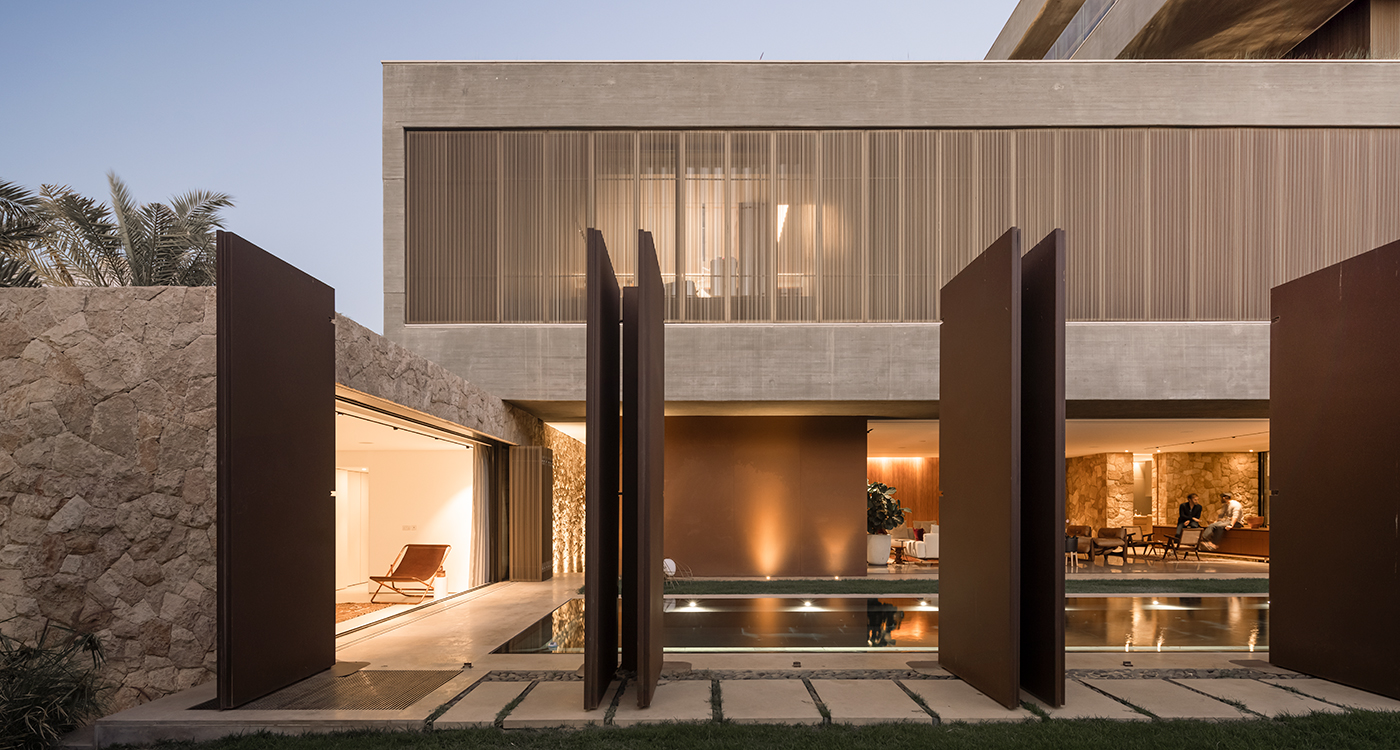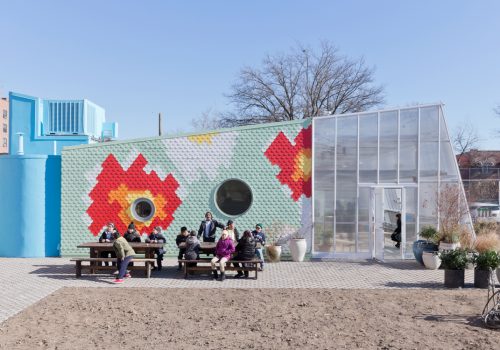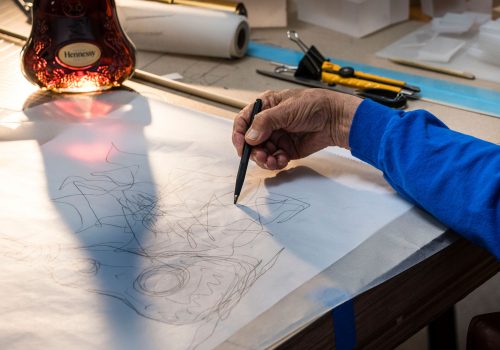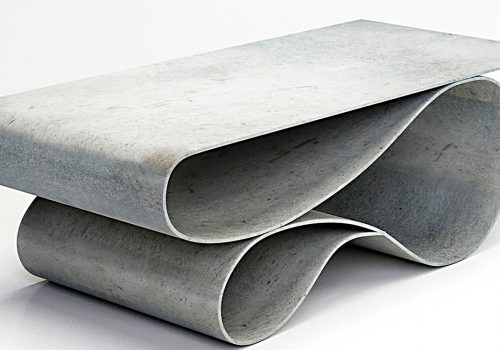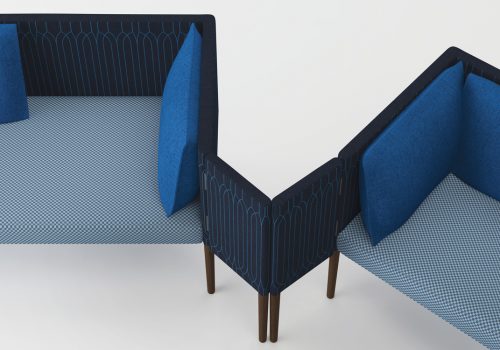It was over twenty-five years ago that Hamad Sultan (above) and Achille Rossini first met as students at RISD (Rhode Island School of Design). Then, after they both graduated in 2000, they ended up getting recruited by the same architecture firm in Boston – NADAAA (formerly Office dA). And today, they’re the two principals of ESAS Architecture, each managing from a different city: Hamad heads the Kuwait office while Achille heads the Berlin one. (Incidentally, Hamad has a separate creative outpost in Rome, Hamad Sultan Studio, from where he speaks to us via Zoom.)
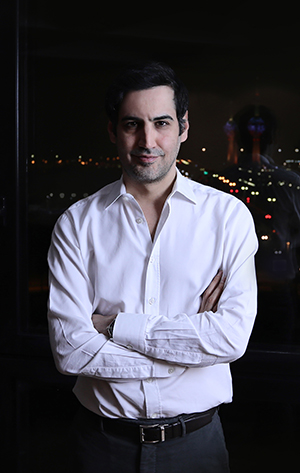
ABOVE: Hamad F. Sultan received his Bachelor of Architecture and Bachelor of Fine Arts from RISD and later received a Master of Architecture in Urban Design from Harvard.
He tells us that, very early on, as a child growing up in Kuwait, he was fascinated by the different types of building structures. Moreover, his awareness was heightened by the fact that his family home had been designed by his uncle, Ghazi Sultan, who had studied architecture at Carnegie Mellon and Harvard’s Graduate School of Design (under Bauhaus founder Walter Gropius). The elder Sultan was in fact a respected figure, not just for his architecture practice, KEO International Architects – one of the largest firms in the Arabian Gulf – but also because he had co-founded Sultan Gallery alongside his sister, Najat, promoting contemporary Arab art at a time when few were giving it the attention it deserved. “I went to a lot of the houses he built. I appreciated how he had a distinct style, often using bricks and concrete,” recalls Hamad, who followed his uncle’s example on one of his recent projects, ‘ZS House’ in Kuwait, which features a beautiful hit-and-miss brickwork screen effect across its front façade that allows light and air to permeate. Interestingly, Hamad also followed in his uncle’s footsteps when he chose to pursue a Master of Architecture in Urban Design (M.AUD) at Harvard University, after he left NADAAA in 2003.
Intrigued by Hamad’s gentle American transatlantic intonation, I enquire about his upbringing and learn that he had in fact grown up in the US from the age of eight, when his family took the decision to leave their native Kuwait. It was also while at school in New England that a maths teacher first noticed his talent for both crunching numbers and drawing. “He suggested I go into architecture. To be honest, both things were fun for me, so it seemed like a great idea, as making a career from such a skill set would never feel like work,” he adds.
Later in the conversation Hamad reveals how much he benefitted from working at NADAAA, and how the friendship he formed with the firm’s owner, Nader Tehrani, has survived to this day. It seems ESAS often collaborates with Tehrani on projects across the Middle East. He also acknowledges that his former boss and uncle played keys roles in helping him become the architect he is today. “There are always traces in anyone’s architectural DNA, characteristics gained not just from the way we learnt but also who we worked for.”
Founded at the end of 2006, ESAS Architecture has grown to the point that it currently employs a little over 30 people between their two offices. Berlin serves as more of a creative hub, while Kuwait handles the construction side as well as the admin. Hamad says that he and Achille will typically undertake five to ten projects at various stages of production at any one time, while also attending to others that are in the final finishing stages. They’re currently working on a couple of residential towers, some commercial residential projects, two private homes and a mosque in Kuwait, across a geographic footprint that encompasses Saudi Arabia, Dubai, Amman, Columbia, plus a few small assignments in Europe. “We like to work in different typologies and environments, as it keeps our creativity going and our ideas flowing,” he explains.
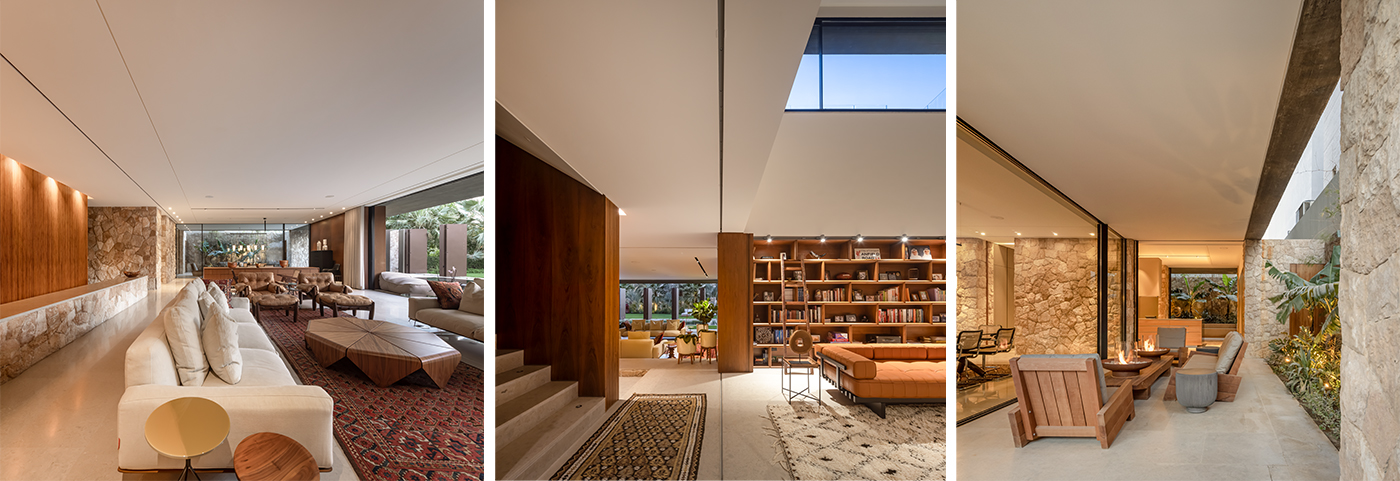
TOP: The pool house and reception as seen from the garden of ESAS Architect’s Outside-In House in the Abdullah Al Salem area of Kuwait City. ABOVE LEFT: The main reception features a couple of Sergio Rodrigues’ iconic ‘Mole’ chairs and ottomans, a large ‘Petalas’ coffee table by Jorge Zalszupin and two Pierre Jeanneret chairs. ABOVE CENTRE: The office is wonderful space flanked by two large bookcases between which is a long sofa facing a desk. ABOVE RIGHT: Looking through the terrace to the main kitchen.
Of course, with every new environment comes the need to adapt and learn new skill sets and ESAS has become well versed in that having worked in a multitude of temperature zones and gained an understanding of how weather conditions impact design and construction. “The way we build, it’s imperative that things withstand the elements, and everything needs to be efficient, not just in planning but also with energy use. Our building must also not be difficult to clean, given that, for example, we face dust storms all the time in the Gulf. Another example is to build smartly so as not to rely 100 per cent on air conditioning. A factor that informs how we make our windows and how we position light and shadow, for example.”
A perfect example of that is the exquisite Outside-In House, which was commissioned by a young Kuwaiti couple who, by all accounts, challenged ESAS Architects to design a multi-level residence that, like its name suggests, welcomes the outside in while – importantly – maintaining privacy, or as Hamad puts it, “a sense of enclosure and inner serenity.” The final result is a striking, open plan house of outward looking spaces, with an interior that’s both modular and transformable. “Opaque partitions can be folded away or slid open to knit together spaces and create alternatives paths of circulation,” explains Hamad. “Large expanses of glazing retract into walls, allowing the inside and outside areas to seamlessly unite.”
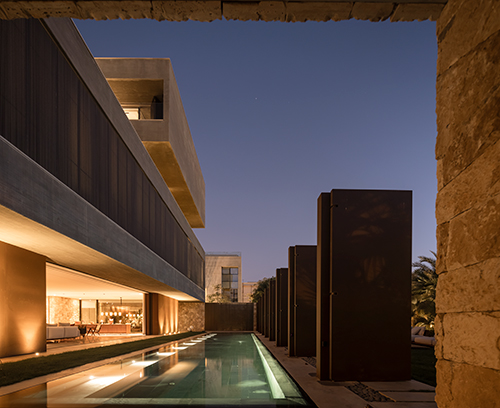
ABOVE: The pool deck as seen from the pool house.
What is most clever about the Outside-In design is how its carefully modulated exterior perimeter of narrow gardens, shaded patios, and circuitous walkways define the extents of the multiple levels of the house by imbuing the house with a sense of continuity between what is within and what is without, while at the same time providing much needed privacy by obscuring the sight lines from the neighbouring residences as well as from the street.
Smart sustainable design and implementation of buildings is not Hamad’s only talent; he is also a seasoned urban planner. Therefore, he invariably sees cities from both a planning and architectural lens, a skillset that has served him well as an official advisor to the Ministry of Housing in Kuwait (Public Authority for Housing Welfare) where he has worked under three different ministers, leading the strategic planning of new sustainable cities in Kuwait with international design and planning bureaus such as Foster + Partners. “That was a very interesting proposal, and it’s actually now being executed, although not exactly as we had initially planned.” Hamad then reveals how he was also involved in the urbanism of Cali in Columbia where they planned to transform the coast into an epicentre.
ESAS Architects’ breadth of work is something that Hamad takes great pride in with a portfolio that ranges from the design of a piece of furniture to the planning an entire city. “We love to work in these different scales”, he explains, stressing that he and Achille are always hands on with each project no matter the scale and what challenges it presents. And by challenges, this usually means dealing with a lot of management and coordination. For any given project it seems the partners must lead fellow architects, partners, 3D renderers, engineers, and site people and that can result in a platoon of individuals contributing to design and construction. And with issues such as climate, building regulations and the quick turn-over of junior architects (a common phenomenon in the industry nowadays) to grapple with, there’s never a shortage of hurdles. Surprisingly though, Hamad credits challenges as a source of inspiration. “Difficulties and obstacles create resistance, which can really inform design. And that’s always helpful.”
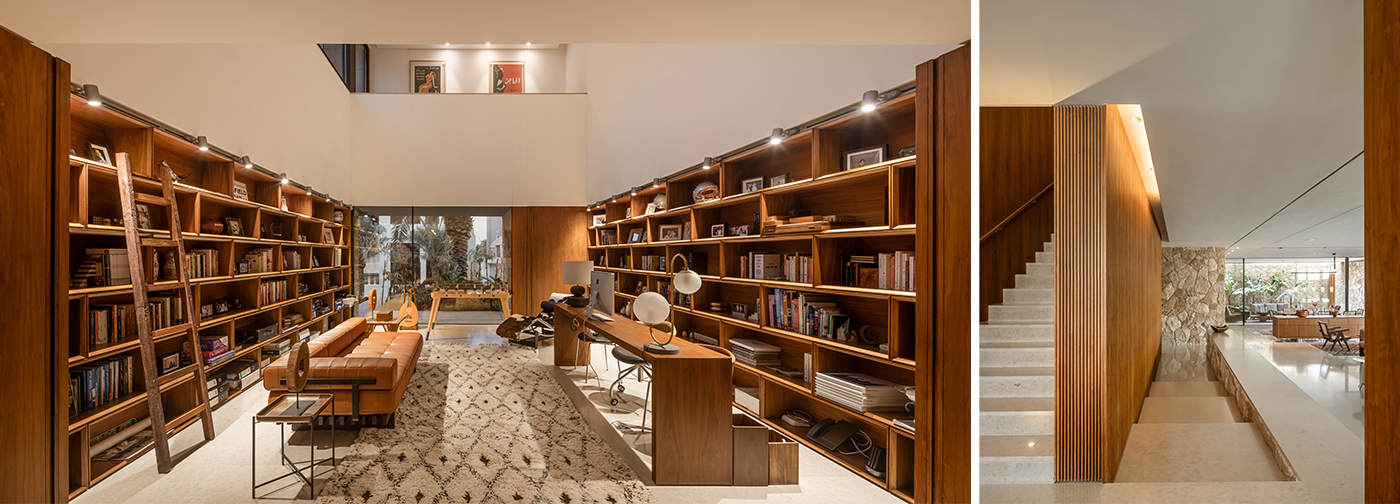
ABOVE LEFT: Another shot of the study, this one showing the large tan leather sofa as well as the Le Corbusier LC4 chaise longue in cowhide. ABOVE RIGHT: The main stairs as seen from the study.
PHOTOGRAPHY: FERNANDO GUERRA


